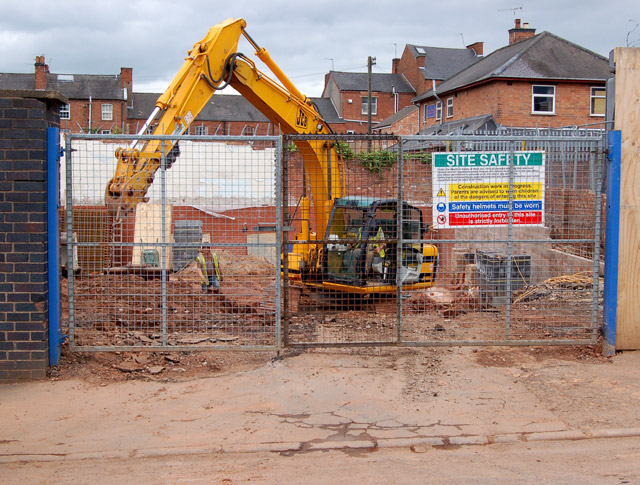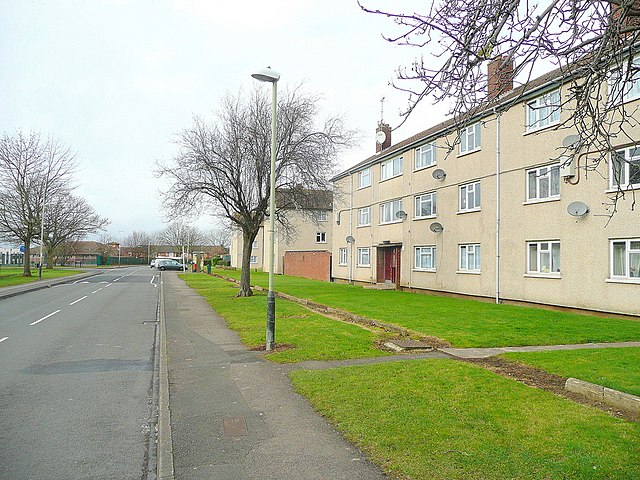In November we held our 3rd My tuppenceworth event giving you the opportunity to speak to those assembled on an issue that really matters to you.
Mike Swadling spoke on the issue of housing and his speech is below.
“with so much of our housing stock built between the wars it’s seems likely the number of homes in need of replacement will increase rapidly in the next couple of decades”
At the recent Battle of Ideas, I attended a panel on ‘Housing Britain: Yimbys vs Nimbys’. For a contentious topic there was a surprising degree of unanimity among the panel and audience on the need to build, and even what to build. Most disagreement came on the process of how to get it done.
I am firmly of the belief we need to build housing, and we need to build lots of it. There is a general consensus to meet current levels of demand we need to build around 300,000 new homes per year. In 2022 we built 232,000 new homes.
In checking the data for this I found numbers for new build and net new homes seemingly used interchangeably. This may be in part because of property conversions, but clearly these are not the same thing. However, it does strike me that with so much of our housing stock built between the wars it’s seems likely the number of homes in need of replacement will increase rapidly in the next couple of decades.
All this has led to a growing number of concealed households”, now believed to total 1.6 million potential households of people who would like to be in their own home but can’t because of shortages. We are believed to have about 260,000 long-term empty homes in England but even if somehow these were magically all brought back into use they would solve little of the overall problem. Even second home ownership lies at about 3% and is little changed in decades.
Whatever the reasons behind it, we have a problem today with a lack of houses. We have a problem with a younger generation feeling increasingly disengaged from our society when they can’t leave home and build their own lives. We also have a problem with rising costs for care as an increasingly aging population often face a choice between staying in their own home or being in a care home, with little suitable middle ground alternatives. In short, we need to build baby build.
“People will more willingly accept hosing built in their area if they believe we have control of our borders and if local people from the community the homes are built in are given priority”
Necessary Pre-requisites
There are however some necessary prerequisites to oversee a largescale increase in housebuilding. People need to believe these are houses for their families, their community, not just to be brought by overseas property speculators or used to house the worlds migrants coming to our shores. People will more willingly accept hosing built in their area if they believe we have control of our borders and if local people from the community the homes are built in are given priority to fill them.
“At the battle of ideas panel on housing one member of the audience was simultaneously praising the green belt and complaining about the intensification of building in the city”
At the battle of ideas panel on housing one member of the audience was simultaneously praising the green belt and complaining about the intensification of building in the city. As someone who lives on the doorstep of the green belt and has seen 157 flats go up next to my home, I can’t help but wonder if one or two of the farmers’ fields in the green belt near me could be used to provide 157 houses rather than have flats built on what was my town’s main car park.
Don’t worry about us running out of land, it would take about 5 football pitches to build 157 homes at 4 bedrooms (these flats are not 4 bedrooms), that would use 7 of the 17.2 million hectares of farmland we have in the UK. (This would provide 385 million homes, with currently about 30million in the UK).
The green belt lovely though it maybe, ensures we live in ever more crowded cities, rather than expand them as the need for housing expands. We are in Croydon, a Surrey market town built out to accommodate the expanding population of London, why are we insisting that future generations live in ever more cramped environments rather than in new suburbs or towns further out.
“Can anyone cite examples where cramping people into tighter spaces gives good outcomes?”
Can anyone cite examples where cramping people into tighter spaces gives good outcomes? A hundred years ago we were clearing out the slums. The high rise post war blocks of flats were generally seen as a disaster in my youth. I wonder why we are intent on recreating them.
What to do
So, what are we to do? I say we need to build bigger, build beautiful, build better, and build for everyone. What would this mean in practice.
Build beautiful – At last year’s Battle of Ideas, Ike Ijeh the architect, and 2019 Brexit Party candidate, spoke about how he had seen developers have success getting acceptance from the local community for new builds through well laid out design. Beautiful well laid out communities, which could well include a mixture of flats and houses are more likely to be approved than throwing another box of 9 flats on a previous 1 home plot.
“We all benefit from better high-end homes; we all get the chance to move up the market and we will free up what used to be called starter homes”
Build bigger – I was impressed by an article I read last year on ‘how building expensive homes can help people on low incomes’. The article proposes we should focus on building more £5million homes rather than £120,000 ones. To quote the article “adding homes that are better quality than the existing stock allows people to move out of the existing stock into better homes, and frees up existing stock for suppressed households.” We all benefit from better high-end homes; we all get the chance to move up the market and we will free up what used to be called starter homes. Few communities would object to an estate of £5million homes being build on the edge of town, and few property developers would sit on this planning permission.
Build better – We need to build new estates with services, shops, schools, transport, and things that people want. We can’t build just based on environmentalist dreamlands, where someone after a hard day’s work will somehow pick-up the kids from the childminder and pop to the shops on a push bike.
We are not going to build everything we need just on the edge of cities and as much as I don’t believe it should be sacred the green belt has a purpose. After the war we built new towns in Crawley, Hemel Hempstead, Welwyn Garden City, Milton Keynes, Peterborough, Northampton, and many other places. These might not make it to your bucket list of destinations to visit but they are good places for work and to raise families.
“Coming into land at Gatwick airport on a sunny day you can see from Croydon to Brighton and view the miles of greenery in between”
Local to us Crawley houses 118,500 people. Coming into land at Gatwick airport on a sunny day you can see from Croydon to Brighton and view the miles of greenery in between. Only the airport and Crawley stand out as major developments. 3 more airports and Crawley’s in the view and it would still be overwhelmingly green, 6 more and you would still think you are viewing the countryside. We could build 2 more Crawley’s in the area of the A22 to A24 corridors and hardly notice.
Croydon has a 10 year housing target from the Mayor of London of 20,790 new homes (2019 – 2028). This on top of the thousands of new homes already built in the borough in recent years. One new Crawley built with the industrial estates, shopping centres, office blocks, schools, doctors and everything else needed to form a community could at this rate supply 60 years of growth needed in Croydon and over a third of our annual UK wide rate of new homes growth.
“with about a quarter of the country having less than £500 worth of savings it is reasonable to assume many will never buy their own home”
Build for everyone – There are not many times I believe government can help, but I increasingly believe we need to build more social housing, and government will need to play a part in this. As someone who was born into the Regina Road Estate council blocks now being pulled down by Croydon Council, I have little faith in their ability to provide property. However, with about a quarter of the country having less than £500 worth of savings it is reasonable to assume many will never buy their own home. We can argue how much government provided housing is needed, who should run it and what right to buy schemes we should have. But, we do need to provide something for the taxpayer and for renters that is not just busting budgets to pay for private rents.
“Why not offer what I might call free ports of housing. Designated areas with council tax holidays for new development or major upgrades to a generation of remote workers keen to get on the housing ladder, encouraged to less fashionable parts of the country”
Some of the problems I have described are local or they are a southeast problem. We have a whole country much of which is not so expensive to live in and could do with attracting more young people. Why not offer what I might call free ports of housing. Designated areas with council tax holidays for new development or major upgrades to a generation of remote workers keen to get on the housing ladder, encouraged to less fashionable parts of the country by an influx of similar people and tax breaks. Let’s level up the country by helping to spread the wealth and helping people better their lives.
We build properties not just for now but for use 100 years from now, we have a changing population, with greater demand and desires. Why not build better, bigger homes, why not let people have second homes, whilst also catering for those who need help. We have the land let’s make use of it, whilst also encouraging people to move across the country. This does require some government action but is best achieved by them laying foundations and then getting out of the way whilst we build baby build.
Picture: Andy F / Building site, Wise Street, Leamington / CC BY-SA 2.0



